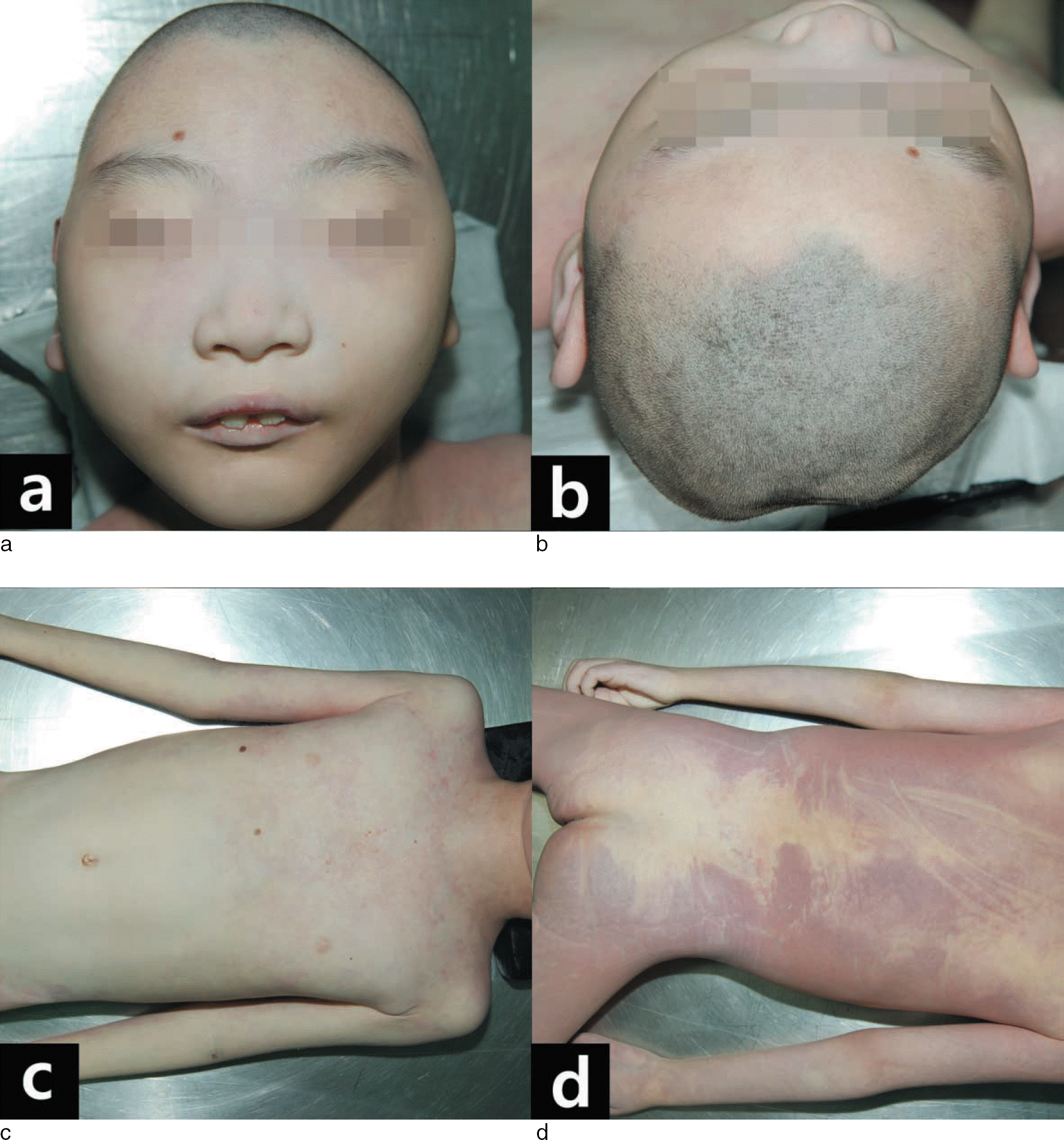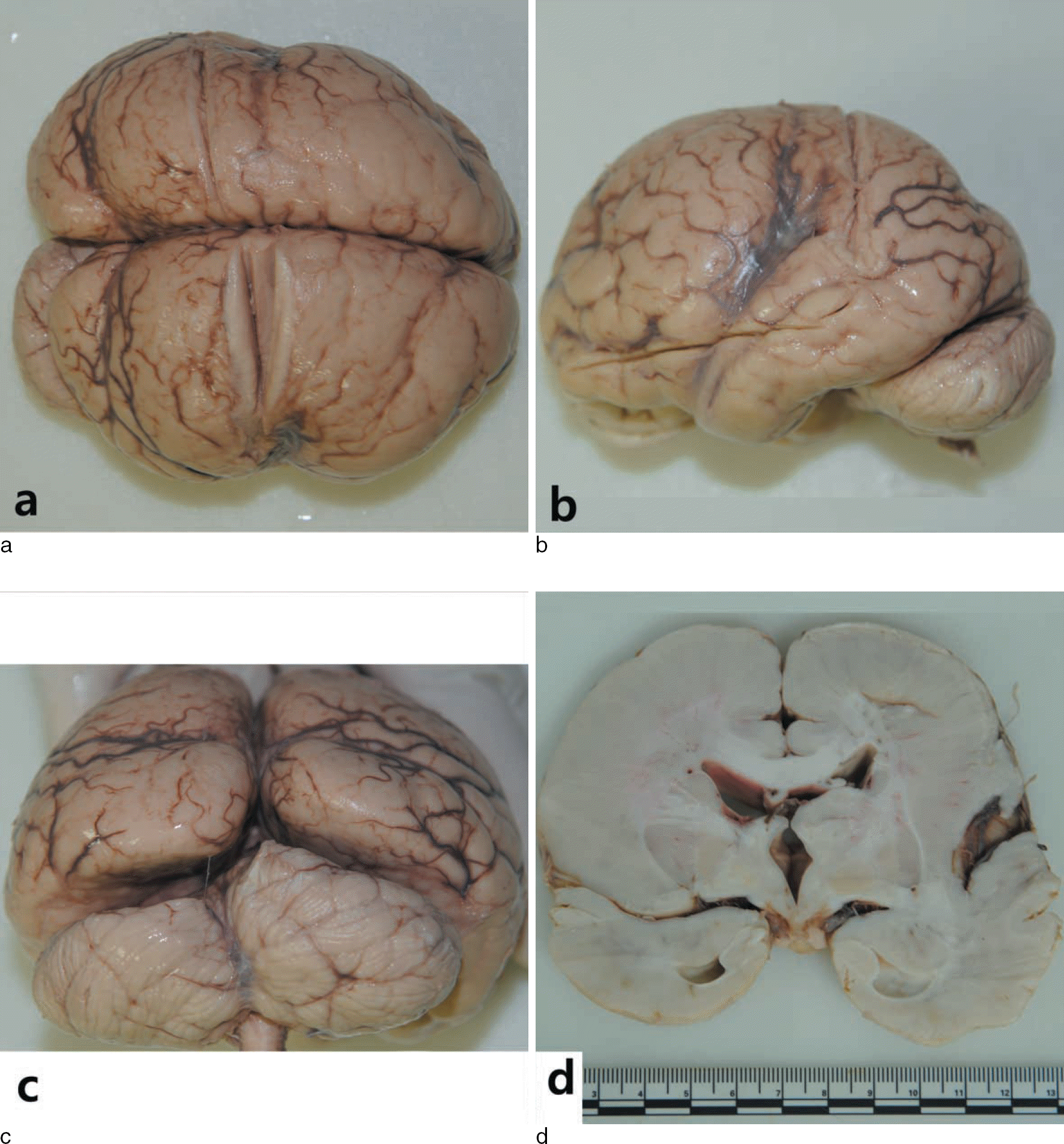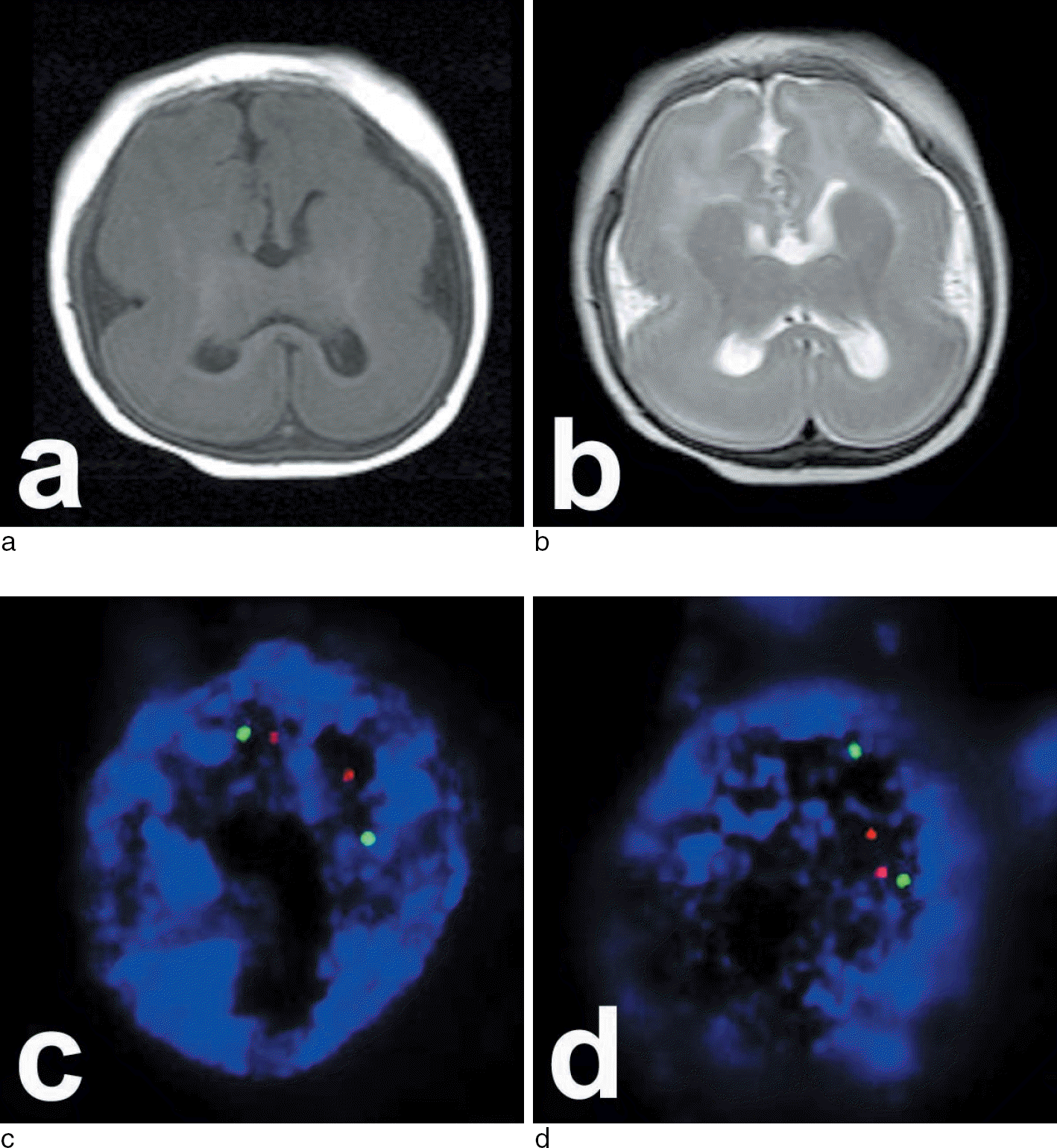Abstract
A 9-year-old Korean boy with lissencephaly was found dead at home. He had previously been diagnosed with lissencephaly that presented with infantile spasm on the basis of magnetic resonance imaging and electroencephalogram results. Antemortem chromosomal banding revealed a normal karyotype. A legal autopsy was requested to eliminate the possibility of neglect or abuse by his parents. The autopsy findings revealed type I lissencephaly with the associated microcephaly. No external wounds or decubitus ulcers were noted. Postmortem fluorescence in situ hybridization for the LIS1 locus and nucleotide sequence analysis of the whole coding regions of the LIS1 gene did not reveal any deletions. The antemortem and postmortem findings revealed that lissencephaly syndrome was associated with isolated lissencephaly sequence. External causes of death were excluded by the full autopsy and toxicology test results. Because patients with mental retardation are frequently victimized and suffer neglect or abuse, thorough external and internal examinations should be conducted at the time of autopsy.
REFERENCES
1. Garg A, Sridhar MR, Gulati S. Autosomal recessive type I lissencephaly. Indian J Pediatr. 2007; 74:199–201.

2. Dobyns WB, Reiner O, Carrozzo R, et al. Lissencephaly. A human brain malformation associated with deletion of the LIS1 gene located at chromosome 17p13. JAMA. 1993; 270:2838–42.

3. Orphanet, the European portal for rare diseases and orphan drugs. [online]. Available at:. http://www.orpha.net//consor/cgi-bin/OC_Exp.php?Lng=GB&Expert=48471.
4. Ledbetter SA, Kuwano A, Dobyns WB, et al. Microdeletions of chromosome 17p13 as a cause of isolated lissencephaly. Am J Hum Genet. 1992; 50:182–9.
5. Chong SS, Pack SD, Roschke AV, et al. A revision of the lissencephaly and Miller-Dieker syndrome critical regions in chromosome 17p13.3. Hum Mol Genet. 1997; 6:147–55.

6. Dobyns WB, Stratton RF, Greenberg F. Syndromes with lissencephaly. I: Miller-Dieker and Norman-Roberts syndromes and isolated lissencephaly. Am J Med Genet. 1984; 18:509–26.

7. Iannetti P, Schwartz CE, Dietz-Band J, et al. Norman-Roberts syndrome: clinical and molecular studies. Am J Med Genet. 1993; 47:95–9.

8. Sergi C, Zoubaa S, Schiesser M. Norman-Roberts syndrome: prenatal diagnosis and autopsy findings. Prenat Diagn. 2000; 20:505–9.

9. Elias RC, Galera MF, Schnabel B, et al. Deletion of 17p13 and LIS1 gene mutation in isolated lissencephaly sequence. Pediatr Neurol. 2006; 35:42–6.

10. Dobyns WB, Garg BP. Vascular abnormalities in epidermal nevus syndrome. Neurology. 1991; 41:276–8.

Fig. 1.
External examination reveals microcephaly and growth retardation. No external wounds or decubitus ulcers were found.

Fig. 2.
Gross findings of the brain show a smooth surface and cortical thickening. Cerebellum and hippocampus are intact.

Fig. 3.
On magnetic resonance imaging (MRI), T1(a)- and T2(b)-weighted images (performed at four months of age) show a decreased number of gyri with a figure eight configuration, compatible with lissencephaly. Fluorescence in situ hybridization (FISH) with a probe for the LIS1 locus fails to detect a deletion (c and d).

Table 1.
Primers Sequences for Amplification of Full Coding Region of LIS1 Gene




 PDF
PDF ePub
ePub Citation
Citation Print
Print


 XML Download
XML Download